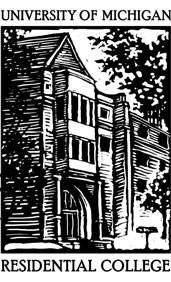One of the most
striking aspects of St. Petersburg are the contrasts, which shape the landscape
of the city. St. Petersburg resembles an onion, with each new
layer of history radiating out of the historical core. Leaving the Pulkovo
airport, you will stumble upon shops, Soviet communal apartments, a statue of
Lenin and the memorial marking the furthest German military advance into the
city before you reach the old city founded by Peter the Great. Immediately upon
reaching the historical center, you are confronted with the beautiful
waterfronts created by the Neva River as well as the classical and baroque architecture,
which permeates the architectural landscape of the city. However, herein lies
the most paradoxical aspect of St. Petersburg identity: it is a city built
around a façade with many visible cracks.
The city’s façade is
best observed by the number of historical buildings undergoing renovation.
These buildings are covered by thin, white linen bearing the generic drawing of
a building, which in turn hides the deplorable conditions under which these
buildings suffer. Yet, in spite of
the white linen and the well-intentioned renovations, one can appreciate many
large cracks, holes and places where the exterior has given way to expose the
bare materials of a given building. On a larger scale, St. Petersburg ‘s façade
consists of a thin layer of opulence, which is used by the central government
to convey power while hiding the poverty and the misery of the city.
The ultimate symbol of
the city’s opulence is the hermitage museum. The hermitage museum consists
among other things from the private art collection of Catherine the Great and
her successors. The hermitage is dotted by a bombastic, baroque interior, which
was meant to impress foreign diplomats and to legitimate the mandate for the
Tsarina’s reign. However, the
streets surrounding the museum are not well kept during the winter and are
covered in a thick layer of ice, resulting from the compacted snow.
Furthermore, the streets are dotted with cars buried under the snow and one
needs only to look at the side of a building in order to perceive the state of
poverty and deterioration, which the city experiences.
Another characteristic
of St. Petersburg, which repeatedly caught my attention, was the city’s
obsession with the West. Peter the
Great founded the city as a window into Western Europe, and the city was part
of a larger scheme to modernize Russia and to end its cultural isolation from
the mainland continent. Yet, precisely the city’ fixation with Western culture
makes it appear artificial and unauthentic. For
example, St. Petersburg was carved according to the “rational” grid plan unto a
swampy, harsh landscape, which suffers occasionally from flooding. Furthermore,
because of the high concentration of buildings constructed by the Romanovs, construction
is very expensive, with many unable to find suitable living spaces or to cope
with the rising costs of living and low wages.
In my opinion, the
city’s
existence lives almost exclusively out the goodwill, which the government has
from time and again shown towards the city. Without the support of the central government, the city would find its splendor crushed under the
oppressive reality which its citizens face day-to-day. Furthermore, although
the city may have succeeded in grafting Russia into the cultural developments
of Western Europe, it may have done so at the expense of its own identity, resulting in
the city’s alienation from the rest of the country.


No comments:
Post a Comment